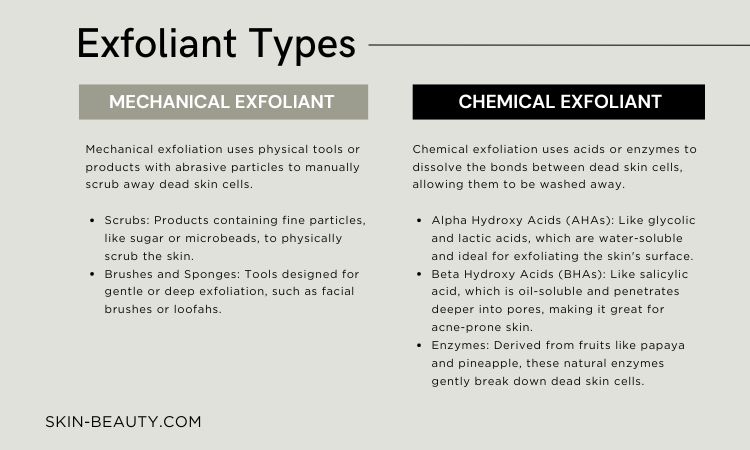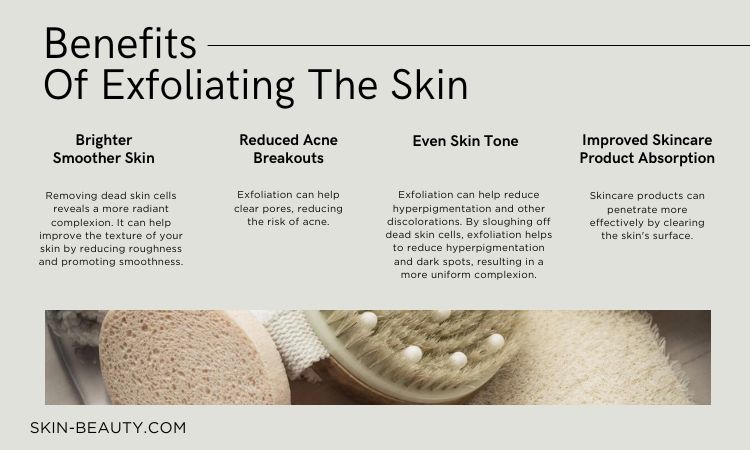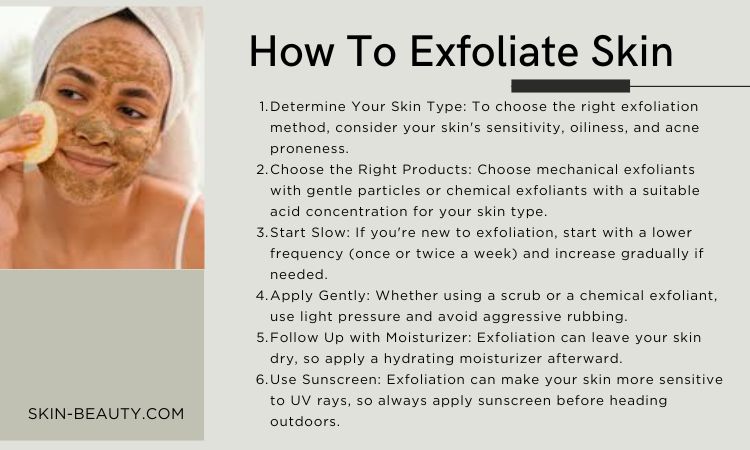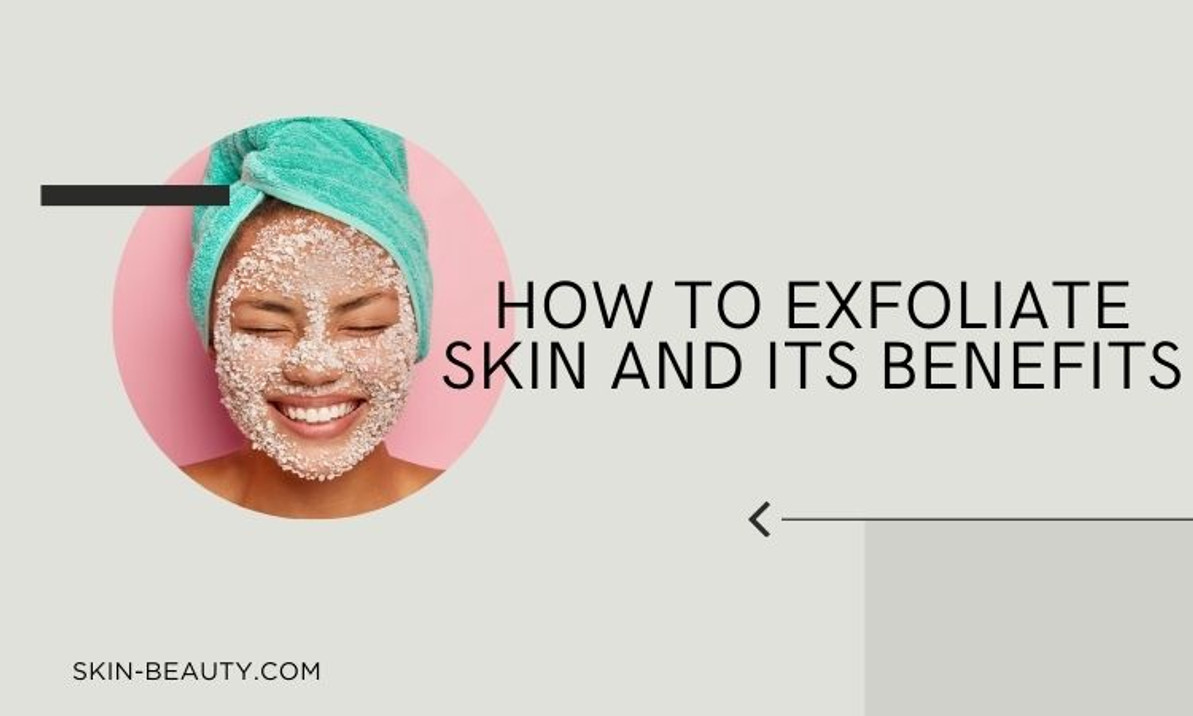How to Exfoliate Skin and Its Benefits
How to Exfoliate Skin and Its Benefits
Exfoliation is a vital step in any skincare routine. It helps to rejuvenate and revitalize your skin by removing dead skin cells from the surface, revealing fresh, new skin underneath. Exfoliating your skin can make a noticeable difference in its texture, appearance, and health. Yet, if not done correctly, it can lead to irritation or damage. Understanding the process of exfoliation is crucial to maintaining healthy and glowing skin.
What is Exfoliation and Why is it Important?
Exfoliation is the process of removing dead skin cells from the outermost layer of your skin. This process can be accomplished through mechanical means (like scrubs and brushes) or chemical means (like acids and enzymes). Exfoliation helps unclog pores, prevent acne breakouts, and promote cell turnover. By exfoliating regularly, you can reveal smoother, brighter skin.
As you age, the rate at which your skin sheds dead cells slows down. This can lead to a buildup of dead skin, resulting in a dull complexion, uneven texture, and clogged pores. Exfoliating can help:
- Reveal Fresher Skin: By removing the outer layer of dead cells, you allow healthier, fresher skin to surface.
- Improve Skin Tone and Texture: Exfoliation helps smooth out rough patches and even out skin tone.
- Promote Absorption of Skincare Products: By clearing away dead skin cells, your serums and moisturizers can penetrate deeper and work more effectively.
- Stimulate Collagen Production: Some types of exfoliation can promote collagen production, aiding in skin elasticity and reducing the appearance of fine lines and wrinkles.
Types of Exfoliation
There are various methods to exfoliate your skin, including physical exfoliants like scrubs and chemical exfoliants such as AHAs and BHAs. It's essential to choose the method that suits your skin type and concerns.
Mechanical Exfoliation
Mechanical exfoliation uses physical tools or products with abrasive particles to manually scrub away dead skin cells. Common methods include:
- Scrubs: Products containing fine particles, like sugar or microbeads, to physically scrub the skin.
- Brushes and Sponges: Tools designed for gentle or deep exfoliation, such as facial brushes or loofahs.
Mechanical exfoliation can be effective, but it requires a gentle touch to avoid irritation or micro-tears in the skin.
Chemical Exfoliation
Chemical exfoliation uses acids or enzymes to dissolve the bonds between dead skin cells, allowing them to be washed away. Popular chemical exfoliants include:
- Alpha Hydroxy Acids (AHAs): Like glycolic and lactic acids, which are water-soluble and ideal for exfoliating the skin's surface.
- Beta Hydroxy Acids (BHAs): Like salicylic acid, which is oil-soluble and penetrates deeper into pores, making it great for acne-prone skin.
- Enzymes: Derived from fruits like papaya and pineapple, these natural enzymes gently break down dead skin cells.
Chemical exfoliation tends to be more consistent and less abrasive than mechanical methods, but proper usage is crucial to avoid over-exfoliation.

Benefits of Exfoliating The Skin
When done correctly, exfoliation can offer a range of benefits:
- Brighter, Smoother Skin: Removing dead skin cells reveals a more radiant complexion. It can help improve the texture of your skin by reducing roughness and promoting smoothness.
- Reduced Acne and Breakouts: Exfoliation can help clear pores, reducing the risk of acne.
- Improved Skincare Product Absorption: Skincare products can penetrate more effectively by clearing the skin's surface.
- Even Skin Tone: Exfoliation can help reduce hyperpigmentation and other discolorations. By sloughing off dead skin cells, exfoliation helps to reduce hyperpigmentation and dark spots, resulting in a more uniform complexion.

How to Exfoliate Your Skin
Follow these steps to ensure a safe and effective regular exfoliation routine:
- Determine Your Skin Type: To choose the right exfoliation method, consider your skin's sensitivity, oiliness, and acne proneness.
- Choose the Right Products: Choose mechanical exfoliants with gentle particles or chemical exfoliants with a suitable acid concentration for your skin type.
- Start Slow: If you're new to exfoliation, start with a lower frequency (once or twice a week) and increase gradually if needed.
- Apply Gently: Whether using a scrub or a chemical exfoliant, use light pressure and avoid aggressive rubbing.
- Follow Up with Moisturizer: Exfoliation can leave your skin dry, so apply a hydrating moisturizer afterward.
- Use Sunscreen: Exfoliation can make your skin more sensitive to UV rays, so always apply sunscreen before heading outdoors.

Best Practices to Remove Dead Skin Cells
To effectively remove dead skin cells, exfoliate using gentle circular motions. Avoid harsh scrubbing, which can damage the skin. After exfoliation, it's important to moisturize to keep your skin hydrated and nourished.
Exfoliation for Different Skin Types
Different skin types require specific exfoliation techniques. Dry skin can benefit from gentle exfoliation to remove flakes, while oily skin may need more frequent exfoliation to unclog pores. Understanding your skin type is essential in choosing the right exfoliator.
Choosing the Right Exfoliator for Your Skin
Selecting the right exfoliator for your skin type, any sensitivities, and the desired results involves considering your skin type, any sensitivities, and the goal of revealing healthier, more radiant skin. Whether you opt for a physical scrub or a chemical exfoliant, the goal is to reveal healthier, more radiant skin.
Choosing the Right Exfoliation Routine for Your Skin Type
Tailoring your exfoliation routine to your skin type is essential for optimal results. Those with dry skin may benefit from gentler exfoliation, while individuals with oily skin may require more frequent exfoliation to control excess sebum production.
Exfoliation can benefit dry skin by removing flaky skin and allowing moisturizers to penetrate deeper. Opt for hydrating exfoliating products to prevent further dryness and promote a smoother skin texture.
Proper exfoliation can help manage oily skin by unclogging pores and reducing sebum buildup. Look for exfoliators with ingredients like salicylic acid to target excess oil and prevent acne breakouts.
Tips for Gentle Exfoliation and Sensitive Skin
Individuals with sensitive skin should opt for gentle exfoliating scrubs free of harsh ingredients. To avoid irritation, exfoliate less frequently and always perform a patch test before trying a new product.
Gentle exfoliating scrubs effectively remove dead skin cells without aggravating sensitive skin. They help maintain a healthy skin barrier and leave your skin feeling smooth and refreshed.
To exfoliate without damaging your skin, choose mild exfoliators and avoid over-exfoliation. Listen to your skin's needs and adjust your exfoliation routine accordingly to keep your skin looking and feeling its best.
Exfoliating your skin is a vital part of a balanced skincare routine. By understanding the different types of exfoliation and following proper techniques, you can achieve a brighter, healthier complexion. Remember, moderation is key—over-exfoliation can lead to irritation and damage. Stick to a routine that works for your skin type, and don't forget to enjoy the process of revealing your best skin yet!
Recent Posts
-
Glow Up: The Magic of Microneedling with PRP!
Glow Up: The Magic of Microneedling with PRP!Ready to unlock your skin’s full potential? The glow-up …Oct 29th 2024 -
Navigating Treatments: Acne Scars vs. Acne Marks Unveiled
Navigating Treatments: Acne Scars vs. Acne Marks Unveiled. In an age where personal appearance of …Oct 28th 2024 -
Microneedling Aftercare: 5 Tips for Best Results
Microneedling Aftercare: 5 Tips for Best ResultsMicroneedling is a game changing skin rejuvenation t …Oct 24th 2024




